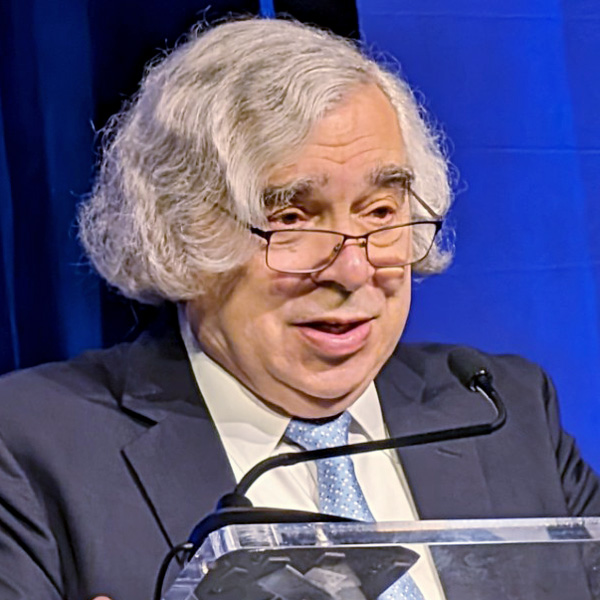MYSTIC, Conn. — Top utility commissioners from four New England states emphasized the need for regulatory innovation to preserve affordability amid the clean energy transition at the New England Energy Conference and Exposition (NEECE) on June 5.
“Inequity is probably the most significant concern when it comes to the clean energy buildout,” said Ed McNamara, chair of the Vermont Public Utility Commission.
As transmission and distribution costs associated with enabling electrification accelerate, protecting low-income customers will become increasingly important, McNamara said.
“The customers with low incomes are not the ones buying [electric vehicles] or installing heat pumps,” he said. “They’re not benefiting from more stable heating and transportation prices due to electrification, but they’re still paying the cost to upgrade the distribution grid.”
Marissa Gillett, chair of Connecticut’s Public Utilities Regulatory Authority, said regulators’ primary job is to interpret legislative directives and find “the most cost-effective way to implement the policy goals that are being articulated.”
“I’ve been a huge proponent of utility regulators taking more of a driver’s seat position,” Gillett said. She stressed the importance of including communities that historically have not been involved in utility proceedings. “The more perspectives we have at the table the more robust our decision-making will be.”
Gillett said one of the major challenges for regulators in the clean energy transition is the “information asymmetry that all utility regulators — and frankly stakeholders — have to grapple with.”
“I don’t think there’s any malintent to it; it’s just a simple reality of utilities having information, and utility regulators really having to learn how to ask the right questions and be prepared with new and creative ways to interpret data,” Gillett said.
Gillett has overseen the PURA’s implementation the legislature’s mandate for a new performance-based regulation framework and has aggressively pursued increased utility accountability. The state’s utilities have been outspoken in their criticism of the new direction, complaining in public and behind the scenes about the state’s regulatory climate and arguing it is harming their ability to raise capital.
Several other regulators also spoke about the need to reconsider utility incentive structures amid the clean energy transition.
“We definitely need to move [toward] stronger performance incentives that are really driving outcomes,” said Philip Bartlett, chair of the Maine Public Utilities Commission. “The key is to make sure [utility investments] are going to the places that are going to get us the biggest bang for our buck.”
Jamie Van Nostrand, chair of the Massachusetts Department of Public Utilities, said regulators should be looking at “incentive mechanisms to align [the utilities’] interests with our interests in pursuing clean energy goals and maintaining affordability.”
Van Nostrand specifically emphasized the need to support the deployment of virtual power plants and demand-side efforts to reduce the overall need for distribution infrastructure.
Regarding transmission, Van Nostrand said there have been “huge technological breakthroughs over the last decade or so, whether it’s advanced reconductoring or grid-enhancing technologies, that could really potentially increase the capability of our transmission grid to carry more load.”
“But we also know there’s a capex bias,” Van Nostrand said. “Utilities tend to want to build more stuff because they get to put it into the rate base and get a return on it. It’s our job as regulators to make sure … that utilities are considering this new technology than can potentially reduce costs.”
Bartlett, who chairs a New England Conference of Public Utilities Commissioners working group on retail demand response, said well-designed time-of-use rates and DR programs can provide “a real opportunity” for cost-constrained customers to lower their electric bills.
Effectively reducing demand also could “dramatically reduce the buildout of the grid” and provide cheaper solutions to preserving grid reliability during the most stressful hours of the year, he added.
“If you can save hundreds of millions of dollars in new programs and fixes to keep things reliable, that’s huge,” Bartlett said.
The event was the 30th annual NEECE, which is organized by the Connecticut Power and Energy Society and Northeast Energy and Commerce Association.
Massachusetts Legislative Update
Massachusetts Rep. Jeffrey Roy, co-chair of the state legislature’s Joint Committee on Telecommunications, Utilities and Energy (TUE), gave an update on clean energy legislation currently under consideration.
The legislature’s previous two sessions have produced significant climate bills, but lawmakers are running out of time to pass a bill by the end of the current session, which will conclude at the end of July. (See Mass. Lawmakers Aiming for an Omnibus Climate Bill in 2024.)
While lawmakers are considering a range of proposals related to EV charging, power purchase agreements, advanced metering infrastructure, building decarbonization and retail electricity choice, the top clean energy priority for many in state government appears to be permitting and siting reform.
“There is nothing more important to our clean energy goals than siting and permitting reform,” Roy said. He called the current siting process in Massachusetts “slow, complicated and intricate.”
Mary Beth Gentleman, former assistant secretary at the Massachusetts Executive Office of Energy Resources and a member of the state’s Commission on Energy Infrastructure Siting and Permitting, said the state should be permitting “at least six times the amount of clean energy infrastructure as we are currently permitting.”
Gentleman said transmission and distribution projects typically take seven years from application to the end of the appeals process.
“At that rate there is little chance that we will be able to comply with the state carbon mandates,” Gentleman said. “Problem No. 1 is there are too many state and local permits, and all of them can be appealed.” Consolidating all required permits into a single process could simultaneously speed up the review and make it easier for the public to participate, she said.
Roy said he is discussing permitting reform with his TUE co-chair, Sen. Michael Barrett, and the Healey administration to “craft a bill we can all agree on.”
“I’m confident that we’re going to get a piece of legislation done by July 31,” he said.
